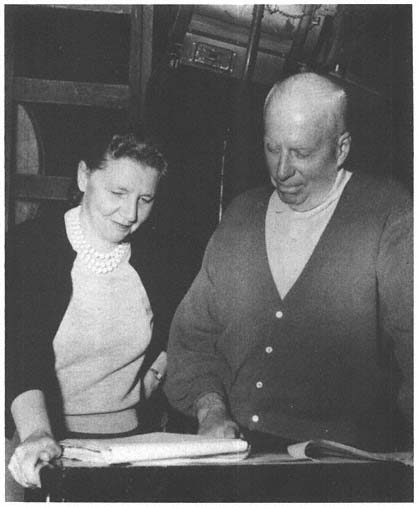 |
| Daisy Bacon at work in her office in the Street and Smith Building |
Among the pulp genres, the love pulps are the ones with the highest circulations and the least discussion. This has been true for a long time. The early pulp fanzines I've seen were from the 1930s, Fantasy Fan and Phantagraph among them, and they focused on science fiction/fantasy. Later pulp fanzines covered the works of Edgar Rice Burroughs, The Burroughs Bulletin being the most prominent among them; the hero pulps, of which Bronze Shadows might have been the first; and a few focused on Frederick Faust/Max Brand. In the 1970s and 1980sThe Pulp Era, Xenophile and Echoes were also slanted toward science fiction/fantasy and the hero pulps. Detective and mystery fandom had their own zines, but discussion of the pulp era stories was limited. Very few people actively collected, and even fewer read the pulps - Black Mask, Dime Detective, Clues - that we now collect avidly.
Love, adventure, westerns, sports, aviation - the pulps that actually sold the most, were the least discussed. And while the rest had at least some discussion, there was nothing I'm aware of written on the love pulps other than Daisy Bacon's guide to writing for the love pulps - Love Story Writer. When i read it a few years ago, I was struck by how similar her guidelines were to those I've seen for the other pulps targeted at adults, regardless of genre. But enough of my musings. Why should you read this book? Laurie tells it better than i could:
Because the woman in question, Daisy Sarah Bacon, was an editor whose magazine, Love Story Magazine, probably touched more women during her twenty-year career than any other woman of her generation. Her influence was felt far and wide by a group of readers who suffered silently through the Great Depression, who had very little leisure time on their hands, and whose only source of entertainment was the family radio, an occasional movie, and reading pulp fiction magazines that sold for a dime or fifteen cents.
Daisy was the defender of the "modern girl." She told them it was okay to work and be married. She presented the possibility that they could even make more money than their husband. She told them that they could have it all but, in no uncertain words, they needed to buck up and not wait for a man to hand it to them. She was what one journalist called a "violent, vociferous feminist," decades before the term "feminist" even became part of the common lexicon.
...
Queen of the Pulps: The Reign of Daisy Bacon and Love Story Magazine is the story of Daisy as the editor of that magazine from 1928 until 1947. Under her management, Love Story Magazine hit a rumored circulation of 600,000 copies a week in the late 1920S and early 193os, a record never surpassed by any other pulp fiction magazine. Under her guidance, Love Story became the go-to magazine for hundreds of thousands of readers every single week for almost twenty years. Love Story's success ushered in a wave of imitators that fueled the red-hot romance magazine industry that began in the 192os and didn't die away until the 195os.
Daisy wasn't the editor of just Love Story Magazine. Over her twenty-three career at Street & Smith, she was manager of seven other periodicals, some of which were the most storied icons to emerge from the pulp fiction phenomenon. Some were under her management for their entire runs: Real Love, Ainslee's Smart Love Stories, and Pocket Love. For others, she replaced their previous editors: Romantic Range, Detective Story Magazine, The Shadow, and Doc Savage magazines during their last years as pulp fiction magazines.
In telling Daisy's story, Laurie has done a superb job. I am in awe of how much research must have gone into this book. Lucid writing and excellent photos tell a family history that's funny and poignant by turns. With the contextualization of place and time (Street and Smith's offices, the linotype machines) it all comes together into a beautiful journey through a successful and eventually embittered, semi-monastic life.
Don't run out and buy this book; it's much easier and safer to order it online from Amazon or Barnes and Noble. And while i enjoyed the book, it didn't turn me into a love pulp collector. But it did turn me into a Laurie Powers collector. We will have our own convention someday :-)


